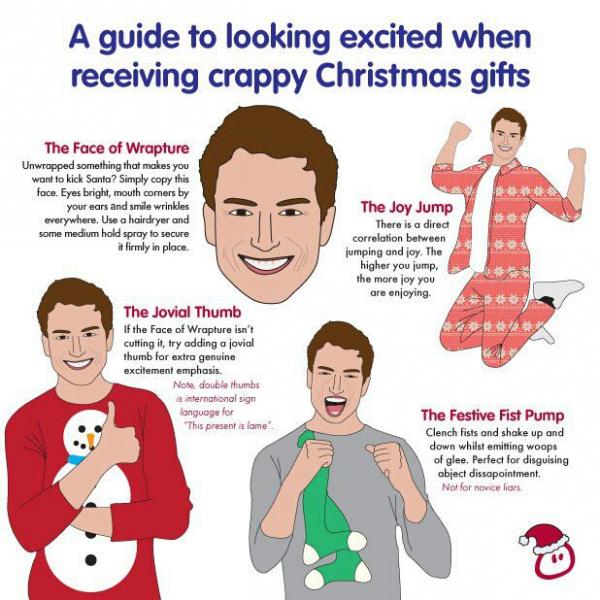Content Marketing Fortnight VI: Drew Barrymore A Content Marketer?
What’s happening (that’s important) in the world of content marketing? This is your fortnightly round-up of the best of the best stuff online for marketers who think about content; for the previous “Fortnights”, go to the bottom of the post. (And for more information about what the Content Marketing Fortnight is, see my intro from the first one. Get this curated newsletter in your inbox every other week – send me a mail.)
"Lost Content" a new frontier
Many content marketers (OK, all content marketers) struggle to budget and produce all of the content that they wish they could. Mark Carroll of TMW makes a compelling case for an overlooked bounty: Archived and making-of content that’s sitting on many companies' servers; he calls it Lost Content. His deck:
Let Google+ distribute your content
Content advertising’s time has come when Google’s adopted it. Now Google plans to allow brands to take content (say an image) from their brand Google+ page and package it up into ads across their display network. It’s a simple, off-the-shelf content advertising play, backed by Google’s huge digital reach. Will this enliven Google’s morose social product? For marketers, maybe. For users, maybe not.
PR Industry PRs content marketing
The PR industry (represented by the Council of Public Relations Firms) has done what PR has always done well: Gathered a bunch of big names to talk about important stuff. In this case, their 2013 Critical Issues Forum addressed content marketing. Lots of good video snippets here, even if they make you want to strangle David Ogilvy:
This fortnight's content geek choice: Netflix owns content strategy
The Atlantic’s Alexis Madrigal explores how Netflix expertly sliced and diced the enormous piles of video content they sit on to do two things: Present the best content recommendations, and commission new content that’s bound to fly. Any content marketer would have a lot to learn about the value of taxonomy from this particular article.
Native advertising #FTW
Expect commentary on native advertising to continue at the same fever pitch in 2014. Four bits worth noting: 1) In her excellent analysis, Guardian’s Ellen Bell calls native advertising “a relatively benign part” of something larger:
Every person and institution can now make their own messages and potentially have as much impact as the largest corporation. The occlusion of motive is becoming more problematic in many areas of communication, but at least in native advertising there is an identifiable commercial transaction.
That’s Ph.D.-speak for “I, the reader, struggle to understand why this content was made.” 2) In a compelling video hosted by BTIG Research (requires registration), Glenn Beck describes how they’ve reintroduced an old-fashioned form of native advertising: when the presenter read the ads. 3) AOL’s Tim Armstrong says they’re calling native, “human advertising”, which is unfortunate, but the video’s enlightening. And, 4) I just published my native advertising report for marketing leaders (introduced here, sans paywall).
Content, overload and filters
Too many people in the content world get worked up over the growth in online content, as if it were accumulated undergrowth in a forest that invited fires. It isn’t. Even before I was born, there was more content in one half-decent library than I could consume in a lifetime. Two things apply to content: discovery tools/techniques and curation, or filtering. JP Rangaswami had some very enlightening observations on the latter.
Peer content marketers, unfiltered
Two recent discussions among content marketers deserve to get more attention. First, a marketer on LinkedIn asked her peers in the Content Marketing Academy group if they could help her source writers; the heated discussion that followed showed rifts between some marketing practitioners and content suppliers. Also, Dan Barker’s and James Gurd's excellent weekly #EcomChat twitter chat focused last week on ecommerce content. Their summary deserves attention from content marketers in the ecommerce space.
Series B funding for Contently
Contently coolly announced that it had won a second round of funding for its content sourcing and marketing platform, to the tune of $9 million – one of several recent data points attesting to investor interest in the space. What’s Contently going to do with the money? First, they’re going to make their workflows slicker. Then, in their words:
We’ll be working on gathering consensus among the conscious players in the industry regarding standards for making branded content sustainable for the talent, the consumer and the publisher.
That sounds nice. But I think they meant “conscientious players”. Contently, you can now afford proofing.
There’s a new visual, social content platform
In case you missed it, the next new new new thing just launched. It’s called Jelly, it was founded by one of the founders of twitter and it’s best described as Quora but with pictures (a Q&A site based on visual questions). If you’re a marketing leader with separate departments for every social channel, let this be the signal that it’s time to rationalize.
Drew Barrymore content marketer
Refinery29’s one of the new breed of ecommerce sites that merges stories with products in a way that consumers seem to like. And now they’ve hired Drew Barrymore to blog for them about her culinary learning curve. This looks a lot like what LinkedIn did with its Influencers program. And it heralds a new era in which every celebrity starts pulling an Oprah to hawk goods (tastefully, of course).
Content Marketing of the Fortnight: Innocent Drinks Not So Innocent
Sometimes I highlight multi-million dollar content campaigns, but it joys me when I can highlight cheap and real stuff that’s touching, funny and just, dare I say it, human. Innocent’s 2013 holidays campaign was just that. This one was my favorite:

Past Content Marketing Fortnights
Content Marketing Fortnight V: A time for branded data, surveys, reports and playbooks
Content Marketing Fortnight IV: Some content marketing insecurity
Content Marketing Fortnight III: On acquisitions, trust and beauty
Content Marketing Fortnight II: Advertising is…unclear
Content Marketing Fortnight I
